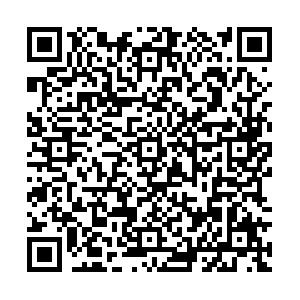|
[1]
|
Brisson M, Kim J, Canfell K, et al. Impact of HPV vaccination and cervical screening on cervical cancer elimination:a comparative modelling analysis in 78 low-income and lower-middle-income countries[J]. Journal of Clinical Oncology, 2020, 38(4):10224. |
|
[2]
|
Lin Sen, Liu Shiben, Tang Yandong. Multi-input fusion adversarial network for underwater image enhancement[J]. Infrared and Laser Engineering, 2020, 49(5):20200015. (in Chinese)林森, 刘世本, 唐延东. 多输入融合对抗网络的水下图像增强[J]. 红外与激光工程, 2020, 49(5):20200015. |
|
[3]
|
Liu Dongmei, Chang Faliang. Active contour model for image segmentation based on Retinex correction and saliency[J]. Optics and Precision Engineering, 2019, 27(7):1593-1600. (in Chinese)刘冬梅,常发亮. 结合Retinex校正和显著性的主动轮廓图像分割[J]. 光学精密工程, 2019, 27(7):1593-1600. |
|
[4]
|
Liu Cong, Dong Wenfei, Jiang Keming, et al. Recognition of dense fluorescent droplets using an improved watershed segmentation algorithm[J]. Chinese Optics, 2019, 12(4):783-790. (in Chinese)刘聪, 董文飞, 蒋克明, 等. 基于改进分水岭分割算法的致密荧光微滴识别[J]. 中国光学, 2019, 12(4):783-790. |
|
[5]
|
Cao Haijie, Liu Ning, Xu Ji, et al. Infrared image adaptive inverse histogram enhancement technology[J]. Infrared and Laser Engineering, 2020, 49(4):0426003. (in Chinese)曹海杰, 刘宁, 许吉, 等. 红外图像自适应逆直方图增强技术[J]. 红外与激光工程, 2020, 49(4):0426003. |
|
[6]
|
Zhao Zijuan, Zhao Juanjuan, Song Kai, et al. Joint DBN and Fuzzy C-Means unsupervised deep clustering for lung cancer patient stratification[J]. Elsevier Ltd, 2020, 91:103574. |
|
[7]
|
Wang Chunzhe, An Junshe, Jiang Xiujie, et al. Region proposal optimization algorithm based on convolutional neural networks[J]. Chinese Optics, 2019, 12(6):1348-1361. (in Chinese)王春哲, 安军社, 姜秀杰, 等. 基于卷积神经网络的候选区域优化算法[J]. 中国光学, 2019, 12(6):1348-1361. |
|
[8]
|
Yao P, Huaqiang W, Gao B, et al. Fully hardware-implemented memristor convolutional neural network[J]. Nature, 2020, 577(7792):641-646. |
|
[9]
|
Lu J. P_Segnet and NP_Segnet:new neural network architectures for cloud recognition of remote sensing images[J]. IEEE Access, 2019, 7:87323-87333. |
|
[10]
|
Ronneberger O, Fisccher P, Brox T. U-net:Convolutional networks for biomedicalimage segmentation[C]//International Conference on Medical Image Computing and Computer-Assisted Intervention, 2015:234-241. |
|
[11]
|
Chen Liangchieh, Papandreou George, Kokkinos Iasonas, et al. DeepLab:Semantic image segmentation with deep convolutional nets, atrous convolution, and fully connected CRFs[J]. IEEE Transactions on Pattern Analysis and Machine Intelligence, 2018, 40(4):834-848. |
|
[12]
|
Zuo L, Peilin H, Zhang C, et al. A robust approach to reading recognition of pointer meters based on improved Mask-RCNN[J]. Neurocomputing, 2020, 338:90-101. |
|
[13]
|
Zhang L, Xu L. An automatic liver segmentation algorithm for CT images U-Net with separated paths of feature extraction[C]//2018 IEEE 3rd International Conference on Image, Vision and Computing (ICIVC), 2018:94-298. |
|
[14]
|
Ibtehaz N, Rahman S. MultiRes U-Net:Rethinking the U-Net architecture for multimodal biomedical image segmentation[J]. Neural Networks, 2020, 121:74-87. |
|
[15]
|
Huang Y, Zhu H. Segmentation of overlapped cervical cells using asymmetric mixture model and shape constraint level set method[J]. Mathematical Problems in Engineering, 2020:1-14. |
|
[16]
|
Ai L, Gao X L. Topology optimization of 2-D mechanical metamaterials using a parametric level set method combined with a meshfree algorithm[J]. Composite Structures, 2019, 229:111318. |
|
[17]
|
Lu Z, Carneiro G, Bradley A P. An improved joint optimization of multiple level set functions for the segmentation of overlapping cervical cells[J]. IEEE Transactions on Image Processing, 2015, 24(4):1261-1272. |
|
[18]
|
Caselles V, Kimmel R, Sapiro G. Geodesic active contours[J]. Int J Comput Vis, 1997, 22(1):61-79. |
|
[19]
|
Li Xiaomao. Variation-based active contour image segmentation method[D]. Shenyang:Shenyang Institute of Automation, Chinese Academy of Sciences, 2008. (in Chinese)李小毛. 基于变分的主动轮廓图像分割方法[D]. 沈阳:中国科学院沈阳自动化研究所, 2008. |
|
[20]
|
Wang X, Zhao X, Zhu Y, et al. An image segmentation algorithm based on NSST and the vector-valued C-V model[J]. IET Image Processing, 2020, 14(18):1614-1620. |
|
[21]
|
Zhang Y, Zhao T, Yin Y, et al. Numerical research on energy evolution in granite under different confining pressures using Otsu's digital image processing and PFC2D[J]. Symmetry, 2019, 11(2):131. |
|
[22]
|
Wang Jingjing, Liu Meir, Zhang Chunhui, et al. An adaptive sparse Bayesian model combined with probabilistic label fusion for multiple sclerosis lesion segmentation in brain MRI[J]. Elsevier B V, 2020, 105:695-704. |
|
[23]
|
Ren Fenglei, He Xin, Wei Zhonghui, et al. Semantic segmentation based on DeepLabV3+ and superpixel optimization[J]. Optics and Precision Engineering, 2019, 27(12):2722-2729. (in Chinese)任凤雷, 何昕, 魏仲慧, 等. 基于DeepLabV3+与超像素优化的语义分割[J]. 光学精密工程, 2019, 27(12):2722-2729. |

 点击查看大图
点击查看大图





 下载:
下载:

